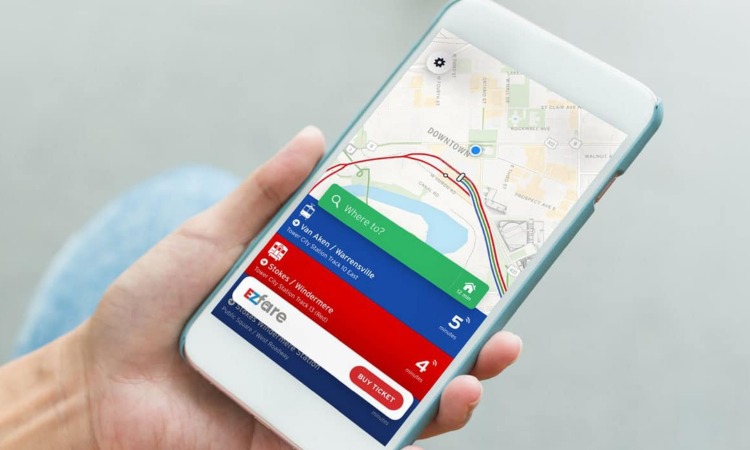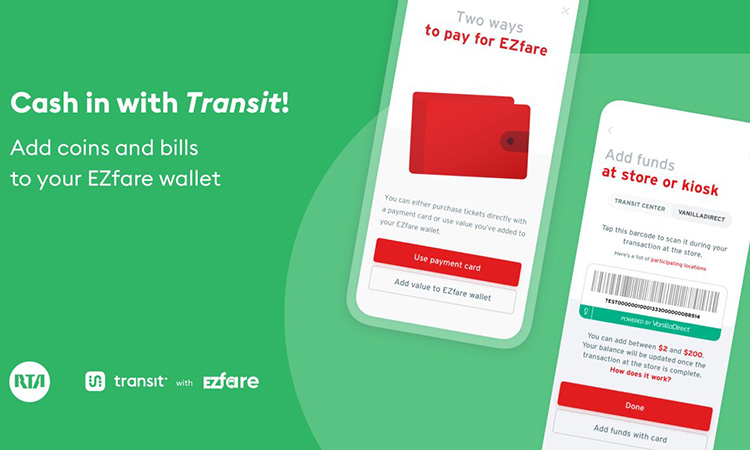Maintaining transit equity amidst the transition to digital ticketing
- Like
- Digg
- Del
- Tumblr
- VKontakte
- Buffer
- Love This
- Odnoklassniki
- Meneame
- Blogger
- Amazon
- Yahoo Mail
- Gmail
- AOL
- Newsvine
- HackerNews
- Evernote
- MySpace
- Mail.ru
- Viadeo
- Line
- Comments
- Yummly
- SMS
- Viber
- Telegram
- Subscribe
- Skype
- Facebook Messenger
- Kakao
- LiveJournal
- Yammer
- Edgar
- Fintel
- Mix
- Instapaper
- Copy Link
Posted: 10 August 2022 | Katherine Conrad - NEORide | No comments yet
Katherine Conrad, Director at NEORide, sat down with Intelligent Transport’s Leah Hockley to discuss the significant role that smart ticketing plays in encouraging public transit use across the State of Ohio and beyond, as well as the work that is being done to ensure that those who are not digitally connected are still being considered and serviced as ticketing becomes more digital.


Credit: Masabi
Can you tell us about NEORide and the company’s role in the wider transit system in the state of Ohio and beyond?
We started with three transit agencies and have now expanded to 19 transit agencies across four states”
NEORide is a council of governments that was established under Ohio law in 2015, looking to better co-ordinate transportation and streamline operations to make it easier for riders to use public transit to travel across the state and beyond. We started with three transit agencies and have now expanded to 19 transit agencies across four states in Ohio, Michigan, Kentucky and Arkansas. Over the years, we’ve just continued to build upon the idea of developing and deploying innovative transportation, working on different ways to provide better service, and are moving from there.
Why do you think smart ticketing is so important in encouraging public transit use across the U.S.?
I think that smart ticketing has become really important in recent years because, right now, the culture has shifted to having access on-demand, especially payment options, on our smartphones. So, public transit needs to continue on with that trend in order to be part of the fold. Therefore, we now offer mobile ticketing through smartphones via our EZfare programme and then, for those individuals who maybe don’t utilise a smartphone, we will be implementing smartcards in 2023.
Why is it so important to ensure that those who are not digitally connected are still being considered and serviced as ticketing becomes more digital?
Public transit is primarily about equity, making sure that individuals, no matter their income type or education level or circumstances, have access to transportation”
Public transit is primarily about equity, making sure that individuals, no matter their income type or education level or circumstances, have access to transportation in order to be able to move around the world freely, get jobs, go to school, medical appointments and so on. Thus, transit doesn’t want to bring forward a barrier that would impede any of that. If individuals don’t utilise smartphones, then we want them to still be able to use the transit service and be able to pay for that in a similar way to how other transit passengers are doing so.
What projects is EZfare currently undertaking in order to make smart ticketing more available across the U.S.?
We are currently in the process of adding fare capping to the EZfare system, which will provide a new level of equity by allowing people to pay the lowest fare possible, regardless of when they are able to bring the money forward. In addition, we’re going to be adding in smartcards and, hopefully, moving to EMV, all within the next couple years.
Do you think that smart ticketing goes hand-in-hand with Mobility-as-a-Service?
Absolutely. We have multiple Mobility-as-a-Service partners, including Transit app, Moovit and Uber. It’s very important, especially for people who aren’t familiar with public transit or the region, to be able to figure out easily how they can get from point A to B. Essentially, all of these partner providers do that, and then also integrate together with the payment options available so that people have a single source for all of their information and payment needs.


Credit: EZfare
How has ticketing changed since the COVID-19 pandemic, in the face of changing travel behaviours and passenger priorities?
It has certainly continued to expand. I think that a lot of people, since the COVID-19 pandemic happened, looked at ways that we can bring contactless payment, or just contactless transportation, to the forefront in order to reduce the spread of infectious diseases like COVID-19. This is why we saw a big uptick in transit systems that wanted to really move that way and push their timeline up to implement mobile ticketing.
What do you think the future of ticketing looks like?
I would definitely like to see fare capping move into more of a regional space so that people can use multiple modes and then also ride in multiple different areas”
I think that the next big wave is really going to be including EMV, so that’s contactless cards. I also think that continuing to move towards being able to pay for multiple types of transit options – such as bikes, scooters, micro-transit, all of those new and emerging transport modes – with a single payment method into a single payment platform will be key. Finally, I would definitely like to see fare capping move into more of a regional space, so that people can use multiple modes and then also ride in multiple different areas.
Drawing from your own personal experience, what has been the best public transport system that you have used, and why?
Maybe I shouldn’t say this because I’m from the U.S., but I was recently in London for a conference and the public transit system was really the best that I’ve utilised. The ability to use EMV made it easy to navigate. It was also clean, and I felt that the conditions were fairly safe when riding public transit. At least right now, London’s public transport system has been the best experience I’ve had so far.


Related topics
Accessibility, Passenger Experience, Public Transport, Ticketing & Payments
Related modes
Bus & Coach
Related cities
Ohio
Related countries
United States
Related organisations
NEORide
Related people
Katherine Conrad








